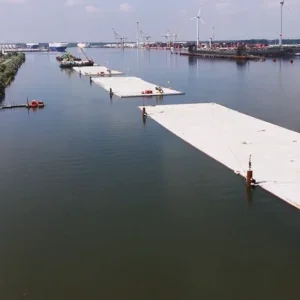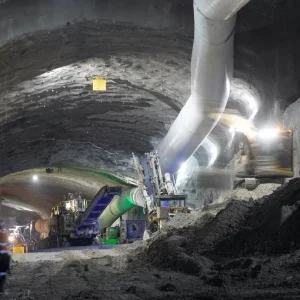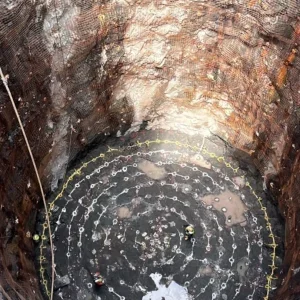The Viedekke/Selmer Skanska JV has pulled out the stops to complete the 2.3km long Melkøya road tunnel, which stretches from the Norwegian mainland to the island of Melkøya off the country’s northern coast. It is set to finish about eight weeks ahead of schedule.
Tunnel breakthrough was acheived on 18 February 2003. Currently on-site, the pipeline placement has just been completed and work on the road surface should get underway this month. During June and July 2003, the tunnel will be sealed with a PVC-lining and fitted with an insulation shield in the roof to ensure the water exits the tunnel via the trenches and not via the road surface.
Although the agreed finish date is 24 November, engineers think that the tunnel should be fully completed by 1 October 2003. When T&TI asked Roar Sve, the contractor’s project manager, what he attributed the JV’s success to, he replied: “because of a good team and very good machinery!”
The 8m wide tunnel (62m2 excavated area) was constructed by drill and blast, using two Atlas Copco drilling rigs from two faces. It was supported with 5,000m3 of shotcrete and 12,000 rockbolts.
The rock was fractured in parts, especially on the mainland side, and forepoling was used to study the gneiss up to 27m ahead of the face. Six hundred tonnes of cement were used in the grouting process, which helped prevent water ingress.
The tunnel forms part of the US$6bn Snøhvit project, situated off Norway’s northern coast. The client, Satoil, will pipe 5.75bnm3 of liquefied natural gas a year from the Barents sea gas fields, via 160km of pipeline, to the processing plant on Melkøya island. There, it will be transported, via the road tunnel, to the town of Hammervest. The cost of the tunnel project, which also involves a 1km road, is US$27.3M.







